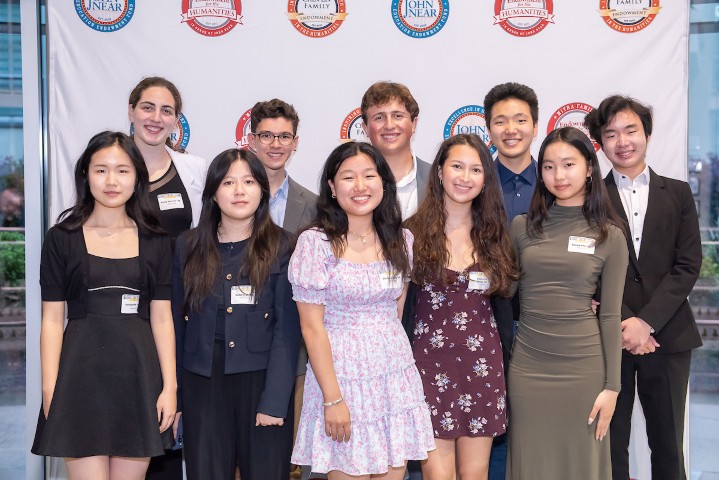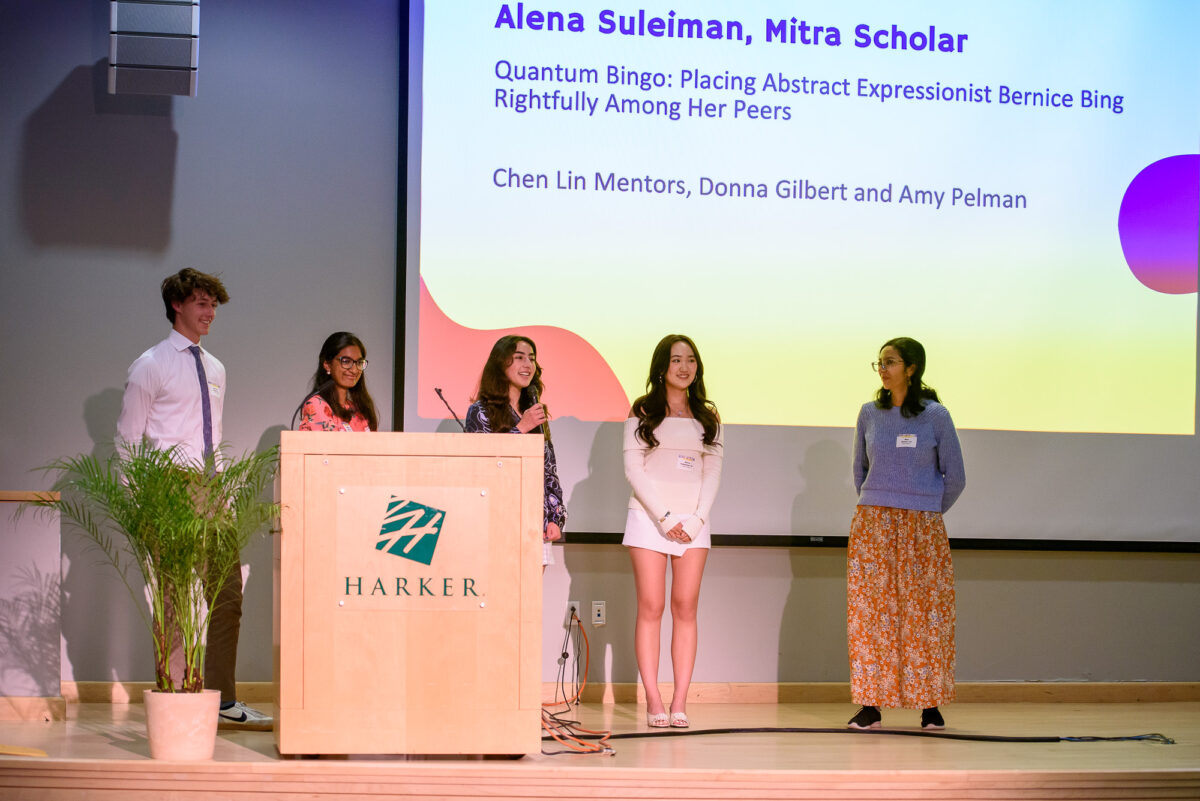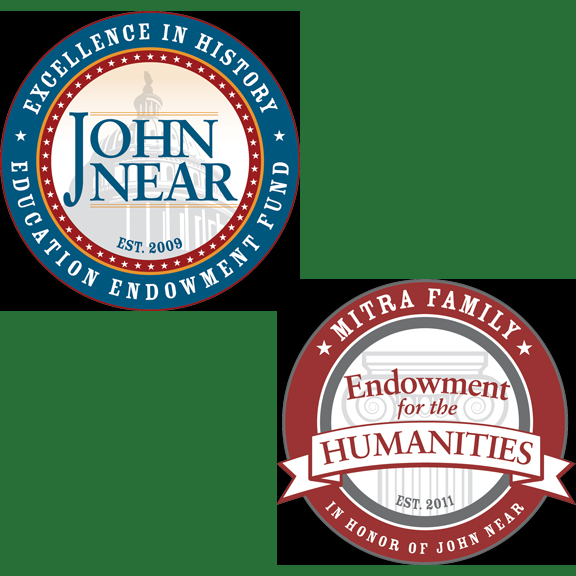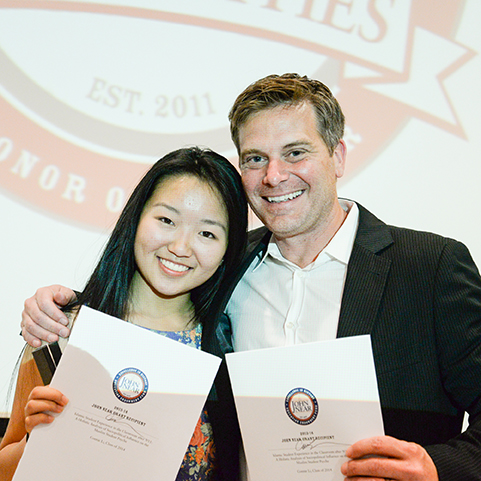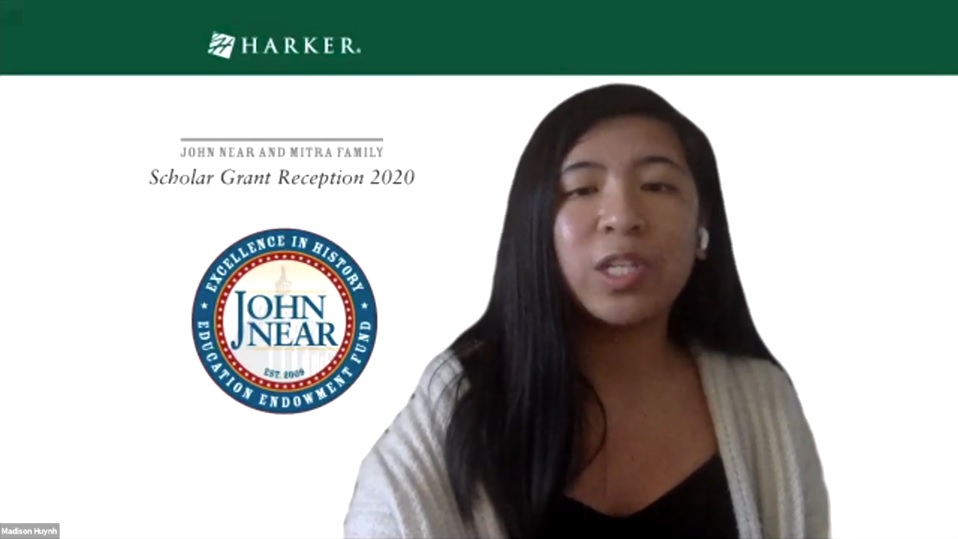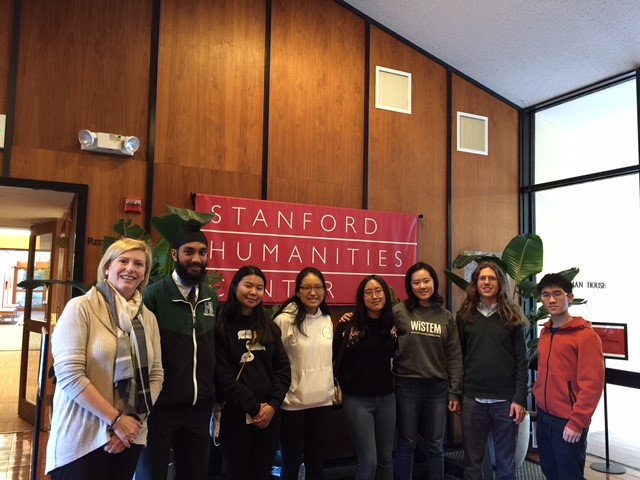Families and friends of this year’s Near-Mitra Scholars gathered at Nichols Auditorium for this year’s Annual Recognition Event.
Near-Mitra
2023-24 Near-Mitra scholars celebrated at special event and reception
On April 23, this year’s student scholars in the John Near and Mitra Family Scholar Grant Program were honored at a special event held at Nichols Hall.
2023 Near and Mitra salons explore wide range of historical topics
Last week, the scholars of this year’s John Near & Mitra Family Scholar Grant Program conducted salons via Zoom discussing the results of the several months’ worth of research they had carried out in the topics of their choice.
Near-Mitra scholars present research at virtual salons
Late last month, this year’s Near-Mitra scholars held virtual salons, which consisted of a presentation summarizing each scholar’s research followed by a question-and-answer session
Scholarly Endeavors: Near/Mitra scholars celebrate 10 years of academically rigorous, independent research
This story originally appeared in the spring/summer 2020 issue of Harker Magazine. By Marla Holt Simar Bajaj, a Harker senior with dual interests in…
Reception honors 2019-20 Near/Mitra scholars
On April 28, a virtual reception was held to honor the students who received scholar grants in the 2019-20 John Near and Mitra Family…
Near-Mitra scholars meet with fellows at Stanford Humanities Center
Last week, seven of this year’s Near-Mitra scholars – seniors Andrew Semenza, Amy Jin, Derek Yen, Emily Chen, Nirban Bhatia and Jackie He –…
